




Keeping your rug clean and well-maintained is essential not only for its longevity but also for creating a clean and healthy environment in your home. Whether you have a Persian rug, a wool rug, or a synthetic one, regular cleaning is necessary to remove dirt, dust, stains, and odors. However, cleaning a rug can be a daunting task if you don’t know the proper techniques and tools to use.
In this comprehensive guide, we will provide you with expert tips and techniques on how to clean a rug effectively. We will cover everything from routine maintenance to removing tough stains. By following these steps, you can ensure that your rug remains in excellent condition for years to come.
Before diving into the cleaning process, it’s important to note that different types of rugs require different cleaning methods. While some rugs can be cleaned at home, others may need professional cleaning. It’s crucial to identify the type of rug you have and follow the appropriate cleaning instructions.
So, whether you spilled wine on your favorite rug or simply want to freshen it up, read on to learn how to clean a rug the right way. With these expert tips and techniques, you’ll be able to maintain a clean and beautiful rug that adds warmth and style to your home.
Why Rug Cleaning is Important
Protects Your Investment
A rug can be a significant investment for your home, and regular cleaning is essential to protect and maintain its value. Over time, dirt, dust, and other debris can accumulate in the fibers of your rug, causing it to look dull and worn. By regularly cleaning your rug, you can help prolong its lifespan and preserve its beauty.
Improves Indoor Air Quality
Rugs can act as a filter, trapping allergens and dust particles in their fibers. If not properly cleaned, these particles can be released into the air, affecting the indoor air quality of your home. Regular rug cleaning helps to remove these contaminants, creating a healthier environment for you and your family.
Prevents the Growth of Mold and Mildew
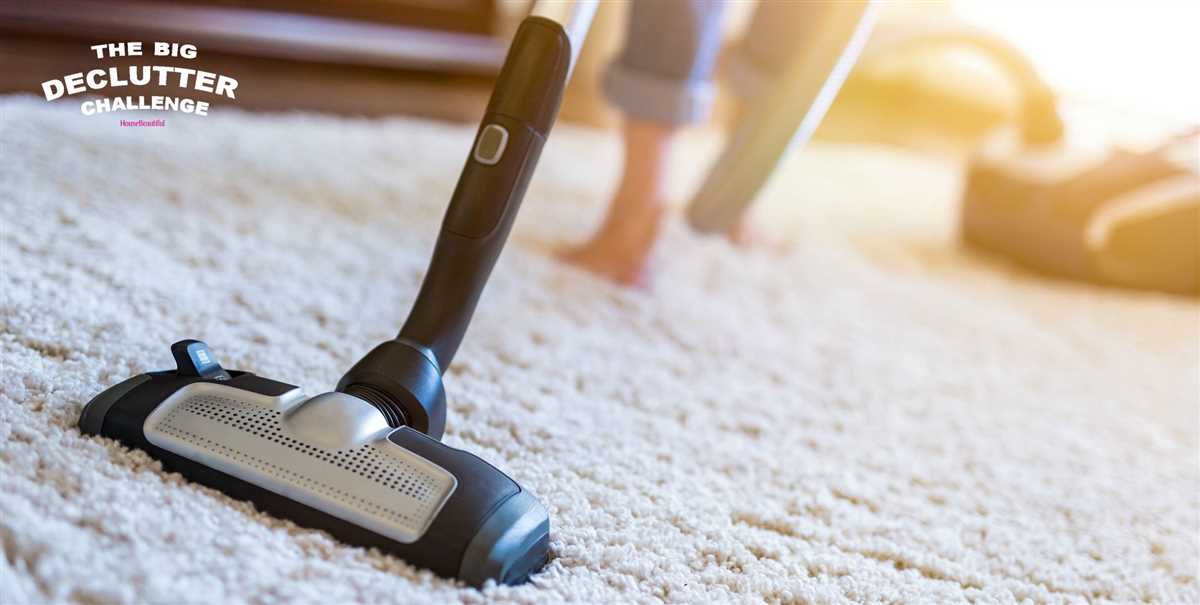
When rugs are exposed to excessive moisture or humidity, they become susceptible to mold and mildew growth. This not only damages the rug but can also lead to health problems for you and your loved ones. Proper rug cleaning removes any moisture and prevents the growth of mold and mildew, ensuring a safe and clean environment.
Eliminates Odors
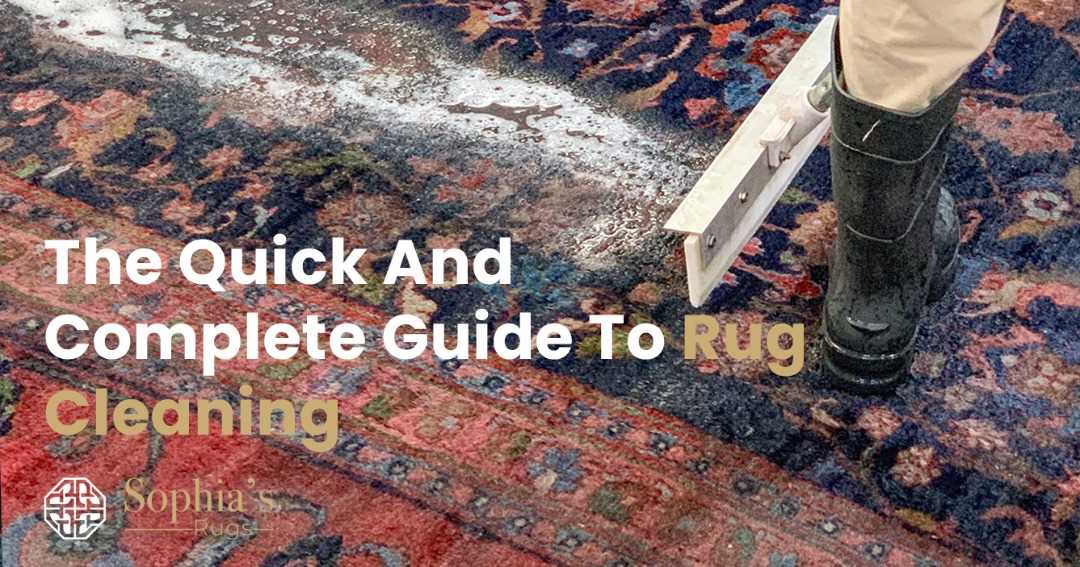
Over time, rugs can start to develop odors due to the accumulation of dirt, stains, and spills. These odors can be unpleasant and difficult to remove without proper cleaning. By regularly cleaning your rug, you can eliminate these odors and keep your home smelling fresh and clean.
Enhances the Appearance of Your Home
A clean and well-maintained rug can instantly enhance the overall appearance of your home. Regular rug cleaning helps to keep the colors vibrant, the fibers soft, and the patterns crisp, giving your home a welcoming and polished look.
Reduces Allergies and Asthma Symptoms
Dust mites, pet dander, and other allergens can accumulate in the fibers of your rug, triggering allergies and asthma symptoms. By regularly cleaning your rug, you can reduce the presence of these allergens, providing relief to those who suffer from allergies or asthma.
Improves the Lifespan of Your Rug
The accumulation of dirt, dust, and other debris can cause your rug’s fibers to become fragile and prone to damage. Regular cleaning helps to remove these contaminants and prevent them from causing unnecessary wear and tear on the rug. This can significantly extend the lifespan of your rug, saving you money in the long run.
In conclusion, rug cleaning is crucial for protecting your investment, improving indoor air quality, preventing mold and mildew growth, eliminating odors, enhancing the appearance of your home, reducing allergies and asthma symptoms, and improving the lifespan of your rug. By prioritizing regular rug cleaning, you can enjoy a clean and healthy environment while maintaining the beauty and value of your rug.
Preparation for Rug Cleaning
Before you start cleaning your rug, it’s important to properly prepare and gather all the necessary tools and supplies. This will help ensure a more effective and efficient cleaning process, and also help protect your rug from potential damage.
1. Remove any furniture or obstacles
Before you start cleaning your rug, it’s important to remove any furniture or obstacles on and around the rug. This will make it easier to clean the entire surface of the rug and prevent any damage to the furniture or obstacles.
2. Vacuum the rug
The first step in preparing your rug for cleaning is to thoroughly vacuum it. This will help remove any loose dirt, dust, and debris from the surface and make the cleaning process more effective. Use a vacuum cleaner with a brush or beater bar attachment to agitate the fibers and remove as much dirt as possible.
3. Check the rug for any stains or spots
Inspect the rug for any stains or spots that require special attention. Note down the location and type of stain, as different stains may require different cleaning techniques and products. Pre-treating these stains before the actual cleaning process can help ensure their complete removal.
4. Gather the necessary cleaning supplies
Make sure you have all the necessary cleaning supplies before you start cleaning your rug. This may include a mild detergent or rug shampoo, a bucket, a soft brush or sponge, a clean cloth or towel, and access to water. Having the right supplies on hand will make the cleaning process easier and more efficient.
5. Test a small, inconspicuous area
Before you begin cleaning the entire rug, it’s important to test the cleaning solution on a small, inconspicuous area of the rug. This will help determine if the cleaning solution is safe to use and will not damage or discolor the rug. Wait for the tested area to dry completely before proceeding with the cleaning process.
6. Clear the area and protect the floor
Clear the area around the rug and protect the floor beneath it before you start the cleaning process. This will help prevent any water or cleaning solution from seeping into the floor and causing damage. Use plastic sheets or towels to protect the floor and create a safe cleaning environment.
By following these preparation steps, you’ll be ready to effectively clean your rug and achieve the best possible results. Remember to always read and follow the manufacturer’s instructions for your specific type of rug and cleaning products.
Gathering the Necessary Tools and Supplies
Before you start cleaning your rug, it’s important to gather all the necessary tools and supplies. Having everything prepared beforehand will make the cleaning process much easier and more efficient.
Tools:
- Vacuum cleaner
- Soft-bristle brush or broom
- Rubber gloves
- Bucket or basin
- Sponge or clean cloth
- Scrub brush
- Stiff-bristle brush
- Plastic spray bottle
- White vinegar
- Mild detergent or rug shampoo
- Clean towels or absorbent cloths
- Fan or air circulator
Supplies:
- Warm water
- White vinegar
- Mild detergent or rug shampoo
- Rug stain remover (optional)
- Baking soda (optional)
Make sure your vacuum cleaner is in good working condition and has a clean bag or filter.
If you’re dealing with specific stains or odors on your rug, you may also want to have some additional tools and supplies on hand:
Additional Stain and Odor Removal Tools:
- Rug stain remover specific to the type of stain (e.g. pet stain remover, grease or oil stain remover)
- Hydrogen peroxide
- Ammonia
- Baking soda
- Clean towels or absorbent cloths
- Enzymatic cleaner (for pet stains)
It’s important to always read and follow the instructions provided with any cleaning products or solutions you plan to use. If you’re unsure about using a particular product or technique on your rug, it’s best to test it on a small, inconspicuous area first.
| Stain Type | Solution |
|---|---|
| Red wine | White vinegar mixed with warm water |
| Grease or oil | Mild detergent or rug shampoo diluted with warm water |
| Pet urine | Enzymatic cleaner specifically designed for pet stains |
| Food or beverage | Mild detergent or rug shampoo mixed with warm water |
| Ink | Rubbing alcohol or hydrogen peroxide |
Removing Furniture Before Cleaning
Before you begin cleaning your rug, it is important to remove any furniture from the area. This will allow you to have a clear space to work with and will make the cleaning process much easier.
If the furniture is too heavy to move on your own, you may need assistance from someone else. It is always better to have someone help you lift and move the furniture to avoid any injuries or damage to the furniture or the rug.
Here are some steps to follow when removing furniture before cleaning your rug:
- Start by emptying the contents of any shelves, drawers, or cabinets that are attached to the furniture. This will make it lighter and easier to move.
- Remove any loose items, such as pillows, cushions, or decorations, from the furniture. Set these items aside and clean them separately if necessary.
- If the furniture has removable legs, unscrew or detach them to make the furniture easier to move. Keep track of any screws or hardware and store them in a safe place.
- Use furniture sliders or coasters to prevent any damage to the rug or the floor while moving the furniture. Place the sliders or coasters under the legs of the furniture and gently slide it away from the rug.
- Once the furniture is moved, inspect the area for any small items or debris that may have been left behind. Vacuum or sweep the area to ensure it is clean and ready for rug cleaning.
Remember to take your time when moving the furniture and be cautious of your surroundings. It is always better to be safe than sorry!
By removing the furniture before cleaning your rug, you will have a clear and accessible space to work with, allowing for a more thorough and effective cleaning process.
Methods for Cleaning a Rug
1. Vacuuming
Regular vacuuming is an essential part of rug maintenance. Use a vacuum cleaner with a rotating brush or beater bar to effectively remove dirt, dust, and debris from the rug’s fibers. Start by vacuuming the rug in the direction of the pile and then go against the pile for a thorough cleaning.
Tip: Vacuum both sides of the rug for maximum cleaning.
2. Spot Cleaning
For small stains and spills, spot cleaning is the best method. Blot the affected area with a clean white cloth or paper towel to remove as much liquid as possible. Then, use a mild detergent mixed with water to gently clean the spot. Avoid rubbing the stain, as it may damage the rug fibers.
Tip: Always test the cleaning solution on a small, inconspicuous area of the rug first to ensure it doesn’t cause any discoloration or damage.
3. Steam Cleaning
Steam cleaning is an effective method for deep cleaning rugs. It requires a steam cleaner or a professional cleaning service. The steam cleaner uses hot water and cleaning solution to extract dirt and grime from deep within the rug’s fibers. It is recommended to hire professionals for steam cleaning delicate or antique rugs.
Tip: Ensure that the rug is completely dry before replacing furniture or walking on it to avoid any potential damage.
4. Dry Cleaning
Dry cleaning is suitable for rugs made of delicate materials or those that cannot handle moisture. This method uses a dry cleaning solvent that is applied to the rug and then vacuumed away, along with the dirt and stains. It is important to follow the manufacturer’s instructions or consult a professional for proper dry cleaning techniques.
Tip: Avoid using excessive amounts of dry cleaning solvents, as they may leave behind residue or cause discoloration.
5. Professional Cleaning
For heavily soiled or valuable rugs, it is recommended to seek professional cleaning services. Professionals have the knowledge, experience, and specialized equipment to clean rugs effectively and safely. They can assess the condition of the rug and determine the best cleaning method for optimal results.
Tip: Regular professional cleaning can help extend the lifespan of your rug and keep it looking fresh and beautiful.
Vacuum Cleaning
Vacuum cleaning is an essential step in maintaining the cleanliness of your rug. Regular vacuuming helps to remove surface dirt, dust, and particles that can accumulate over time. Here are some expert tips and techniques for vacuum cleaning your rug:
1. Choose the Right Vacuum
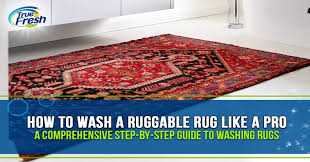
When vacuuming your rug, it’s important to use a vacuum cleaner that is suitable for the type of rug you have. For delicate or antique rugs, choose a vacuum with adjustable suction power and a soft-bristle brush attachment. For more durable rugs, a standard upright or canister vacuum will usually suffice.
2. Prepare the Rug
Before you start vacuuming, remove any small objects, such as toys or coins, from the surface of the rug. This will prevent them from getting caught in the vacuum cleaner and potentially causing damage.
3. Check the Filter and Bag
Make sure to regularly check and clean the vacuum cleaner’s filter or bag. A clogged filter or bag can hinder the suction power of the vacuum and reduce its effectiveness in cleaning your rug. Follow the manufacturer’s instructions on how to properly maintain the filter or bag.
4. Vacuum in Multiple Directions
To ensure thorough cleaning, vacuum your rug in multiple directions. Start by vacuuming along the length of the rug, then switch to vacuuming across the width. This helps to loosen and remove dirt and particles that may be trapped deep within the rug fibers.
5. Pay Attention to High-Traffic Areas
Focus on vacuuming high-traffic areas of your rug more frequently. These areas tend to accumulate more dirt and debris and may require extra attention to keep them clean. Vacuuming these areas at least once a week is recommended.
6. Don’t Forget the Underside
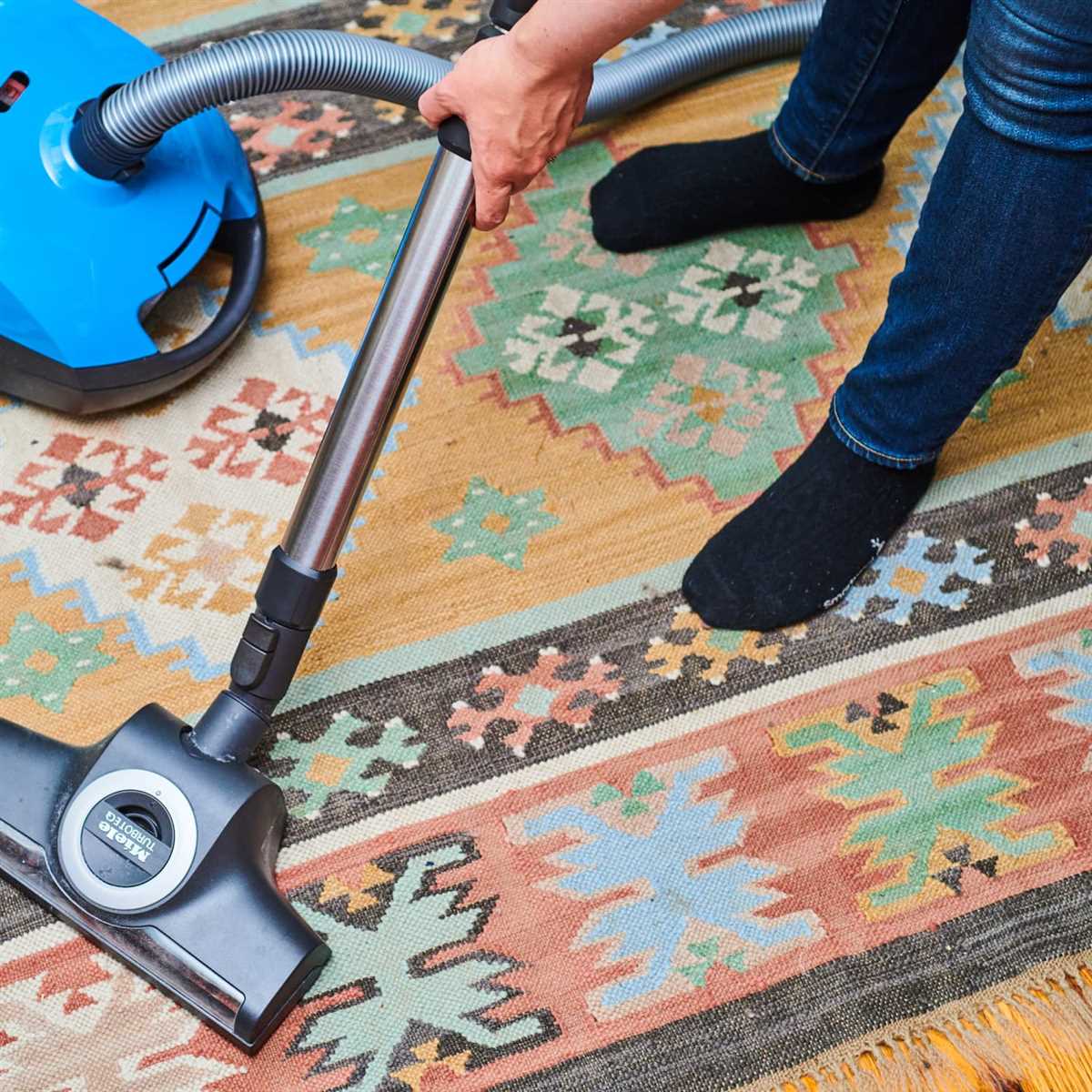
In addition to vacuuming the top surface of your rug, don’t forget to vacuum the underside as well. This helps to remove any dirt or dust that may have settled on the underside and improves overall cleanliness.
7. Use Attachments for Hard-to-Reach Areas
For hard-to-reach areas, such as corners or edges, use the appropriate attachments on your vacuum cleaner. These attachments can help to remove dirt and debris from areas that the main vacuum head may not be able to reach effectively.
8. Be Gentle with Fringe
If your rug has fringe, use caution when vacuuming around it. The vacuum cleaner’s brush can sometimes get tangled in the fringe and cause damage. Either avoid vacuuming the fringe or use a handheld vacuum or an attachment specifically designed for cleaning fringe.
By following these vacuum cleaning tips and techniques, you can effectively remove dirt and maintain the cleanliness of your rug, helping to prolong its lifespan and keep it looking its best. Remember to always refer to the manufacturer’s guidelines for specific care instructions for your rug.
Spot Cleaning
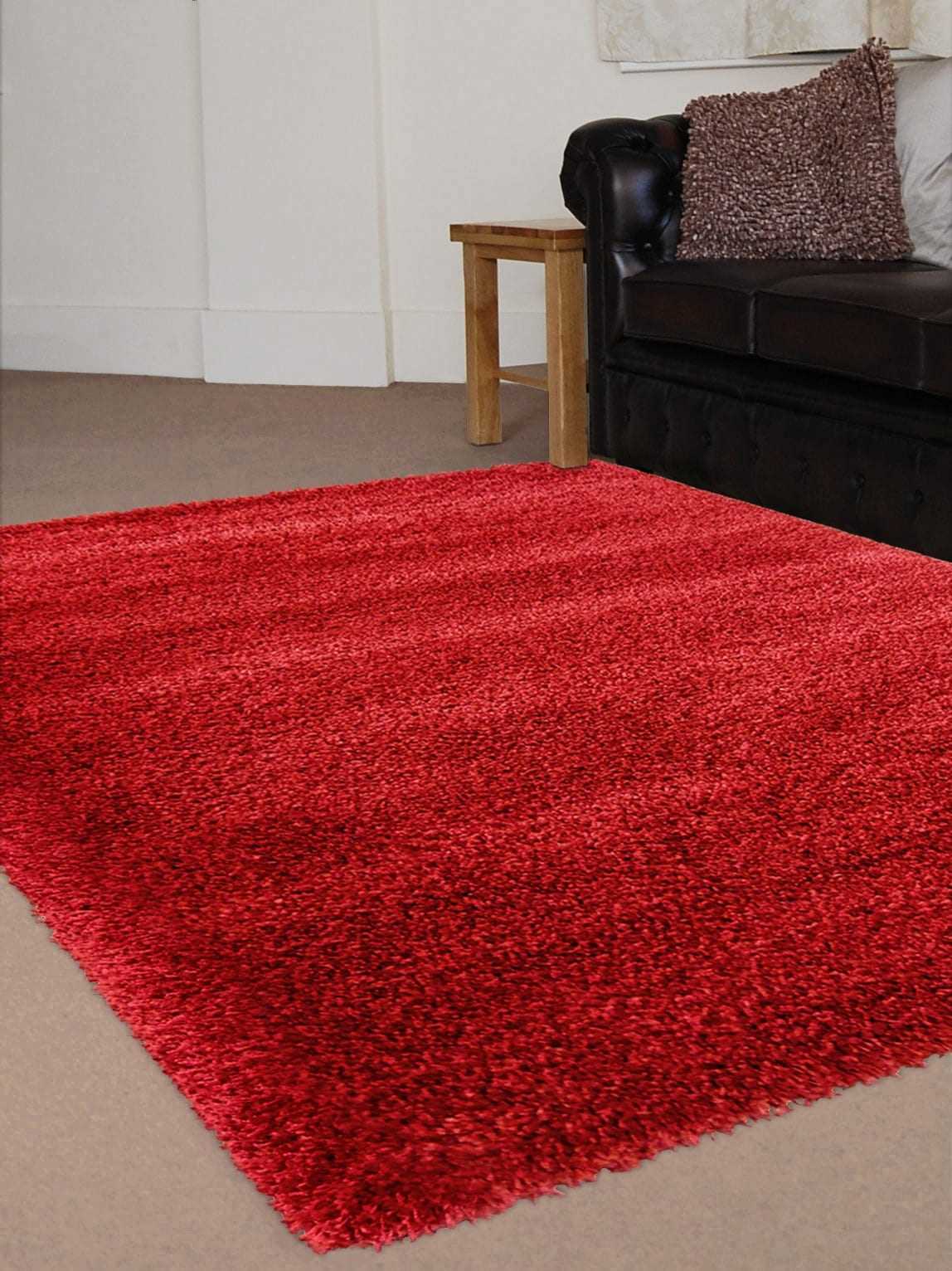
Spot cleaning is an important technique to remove small stains or spills on your rug. By addressing these spots as soon as possible, you can prevent them from becoming permanent stains and maintain the overall cleanliness of your rug. Follow these steps to effectively spot clean your rug:
- Gently blot the spot with a clean cloth or paper towel to absorb any excess liquid or residue.
- Avoid scrubbing the spot, as this can cause the stain to spread or damage the rug fibers.
- If the spot is still fresh and wet, you can dilute it with a mixture of water and mild detergent. Apply a small amount of the solution to the spot using a clean cloth or sponge.
- Gently blot the spot again with a clean cloth or paper towel to remove any remaining residue.
- If the spot is dry or difficult to remove, you can use a commercial spot cleaner specifically designed for rugs. Be sure to read and follow the instructions on the product label.
- After spot cleaning, rinse the area thoroughly with clean water to remove any cleaning solution residue.
- Gently blot the area once more with a clean cloth or paper towel to dry it.
- Avoid stepping or placing any objects on the spot until it is completely dry to prevent re-soiling or damage.
Remember to test any cleaning solution or spot cleaner on a small, inconspicuous area of the rug first to check for any color fading or damage. If the spot persists or if you are unsure about the cleaning process, it is best to consult a professional rug cleaner for further assistance.
FAQ
What are some common rug cleaning techniques?
Some common rug cleaning techniques include vacuuming, spot cleaning, professional deep cleaning, and dry cleaning. It is important to choose the appropriate technique based on the type of rug and its specific cleaning instructions.
How often should I clean my rug?
The frequency of rug cleaning depends on factors such as the amount of foot traffic, presence of pets or children, and the type of rug. In general, it is recommended to vacuum high-traffic areas daily and deep clean the rug every 6 to 12 months.
Can I clean my rug at home or do I need professional help?
Many rugs can be cleaned effectively at home, especially with regular vacuuming and spot cleaning. However, some rugs may require professional cleaning, especially if they are delicate, valuable, or heavily soiled. It is best to check the manufacturer’s guidelines or consult a professional for advice.
What is the best way to remove stains from a rug?
The best way to remove stains from a rug depends on the type of stain. For water-based stains, blotting with a clean cloth and mild detergent solution usually works. For oil-based stains, using a solvent-based cleaner or a mixture of vinegar and water can be effective. It is important to test any cleaning solution on an inconspicuous area of the rug first.
Can I use a steam cleaner to clean my rug?
Steam cleaners can be used on some rugs, but it is important to consult the rug manufacturer’s guidelines first. Steam cleaning can be effective for deep cleaning and removing stains, but it may not be suitable for all types of rugs. Some rugs may require alternative cleaning methods to avoid damage.
How can I prevent my rug from getting dirty?
To prevent your rug from getting dirty, you can take a few steps. Place doormats at entrances to capture dirt and debris, remove shoes in the house, vacuum regularly, and spot clean any spills or stains immediately. Additionally, rotating the rug periodically can help distribute wear and tear evenly.
What should I do if my rug gets wet?
If your rug gets wet, it is important to act quickly to prevent damage. Remove any excess moisture by blotting with a clean towel or using a wet/dry vacuum cleaner. Hang the rug to dry or lay it flat in a well-ventilated area, away from direct sunlight and heat sources. It is also important to address the cause of the moisture to prevent mold or mildew growth.















